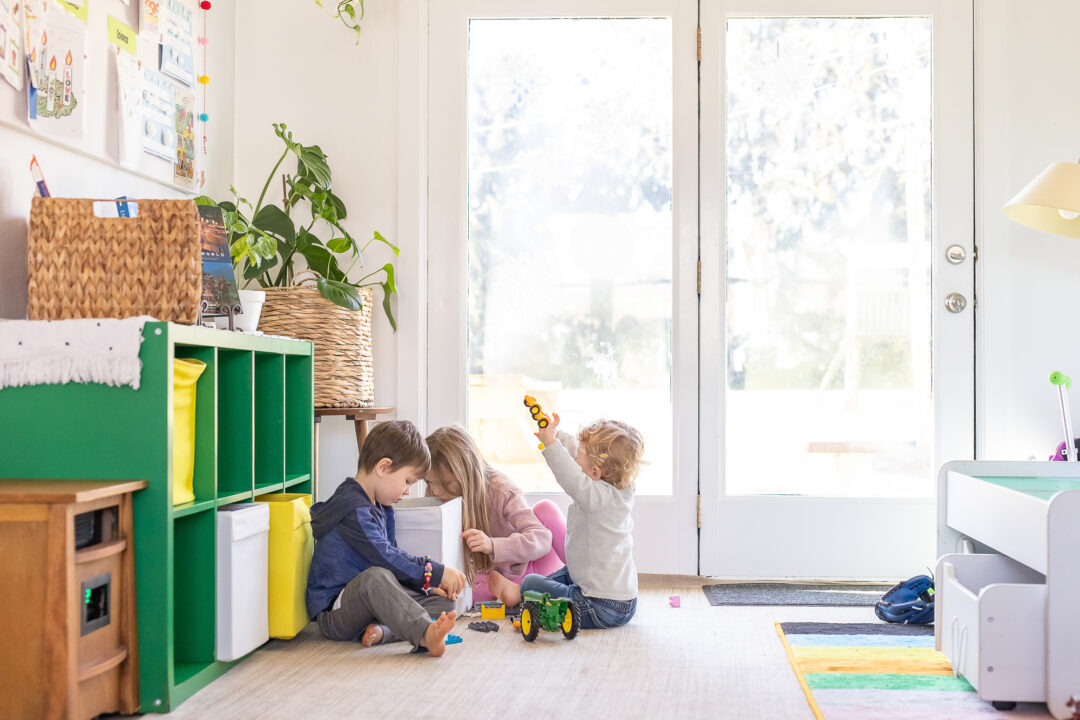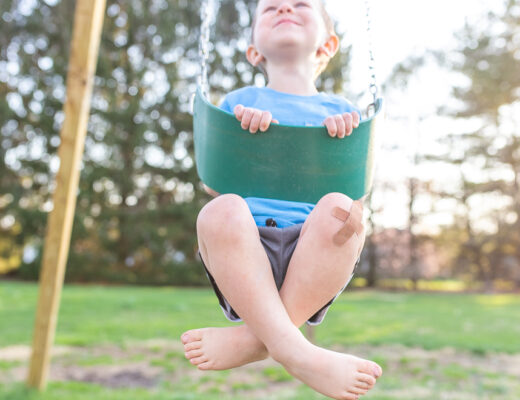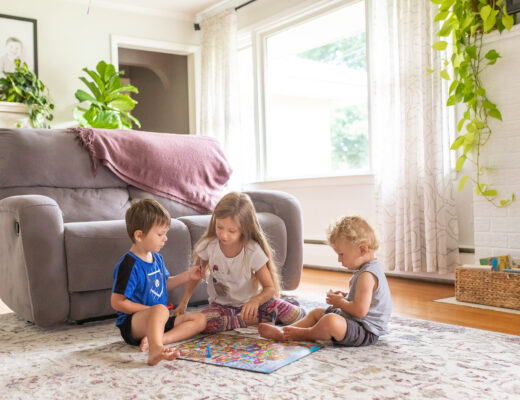Created by Mike & Mollie. Subscribe to our blog.
Sometimes my kids are the biggest reminders of what it means to live more intentionally. At a young age, their innocence and unfiltered comments (often embarrassingly honest) resonate with me as they take in the world around them.
The other day, my daughter made a remark which made me realize how much she really is perceiving and why it matters. She was noticing how much “stuff” someone else had and the degree of clutter and overwhelm it had caused them.
But even at 6-years-old, she realized a significant change in the way our family has chosen to live.
My husband and I are still relatively new to our minimalism journey and certainly don’t live in a “magazine-worthy minimalist home”, but we do have everyday practices and routines that have influenced our desire to live intentionally.
Choosing to live with less stuff, spending our money on what we value most, and deciding how to best use our time are habits we’ve chosen to instill into our own lives.
We’ve seen the benefits for ourselves and want to share this lifestyle with our kids too, so in this post I’ll share 8 lessons in minimalism that we aim to teach them as they grow into more independent thinkers.
8 Lessons in Minimalism For Our Kids
Be grateful for what you have.
It’s amazing how the “keeping up with the Jones’” mentality kicks in at such an early age. Kids notice what others have and suddenly the grass is greener on the other side. It’s natural to have wants and desires, but teaching our kids to be grateful for the items they do have and not constantly wishing for more is a healthier way to live.
You don’t need a buffet of choices to be happy.
When it comes to breakfast and lunch, we aim to keep our options pretty simple and healthy but limited in variety. I’ve realized that kids don’t need a buffet of choices to be well-fed and satisfied, but rather consistency on a regular basis so that they’re taught healthy patterns rather than continuous novelty.
More isn’t always better.
With three (soon to be 4) young kids running around the house, they each have their interests in toys and activities they enjoy playing with. Years ago, I used to think that in order to have a “fun home”, we needed to have bins filled with toys and many choices to avoid boredom.
I’ve found that a vast amount of toys creates more overwhelm during play, not to mention a much greater amount to be cleaned up at the end of the day.
We’ve utilized a toy rotation system (swapping out toys every few months) and allow each of the kids to have a “special toy drawer” in their room where they can keep only what fits inside that drawer.
Live generously.
With multiple siblings and the interaction with neighborhood playmates, our kids have opportunities to practice sharing and being generous on a regular basis. While we still observe some selfish behavior (because they’re still kids), we aim to help them see that what makes them happy might make someone else feel the same way.
Simple notes of encouragement, sharing toys, or doing an unexpected act of service are tangible ways that we encourage our kids to live generously.
Every item has a home.
When every item has a determined home, it allows for a lot less clutter from toys, dirty clothes, and shoes. Teaching our kids this habit from a young age encourages them to put things back where they belong instead of on the floor or counter tops.
By limiting the number of things they own (toys, clothes, or other belongings) it helps them to have a manageable amount of items to put away on a regular basis.
Contribute as a valued member of our home.
As parents, we take on most of the responsibilities around the house. But as our kids get older and more independent, we expect them to help to take on some of the household responsibilities. By giving them age-appropriate chores, we believe that this teaches them to value our home and possessions.
Value experiences over “things”.
Like most children, our kids definitely enjoy getting new toys and “trinkets”. What we want to teach them is that all of our “things” won’t keep us happy forever. Toys break, clothes get holes and stains, and treats are a temporary pleasure.
What will they most remember years down the road? Hopefully the family vacations and day trips we took, splashing in the creek on summer days, Sunday dinners at Grandma’s, having campfires in the fireplace, our weekly homemade pizza and movie nights, or the 1:1 dates we took with each of them.
P.S. Making a yearly family photo book is one of our favorite ways to look back and remember all the fun memories we’ve had over the years.
It’s okay to live differently.
This one will certainly take many years to realize and practice, but just because neighbors and friends have certain things, doesn’t mean we also need to have them to live a happy life. What makes others satisfied might not have the same effect on us. We aim to teach them to love others and that life is more than just a pursuit of our own pleasures.
🌿 Introducing, Declutter Your Life, a premium newsletter with monthly challenges to help you live a less cluttered life– inside and out.




